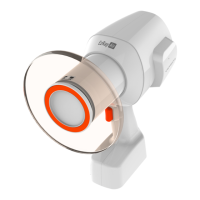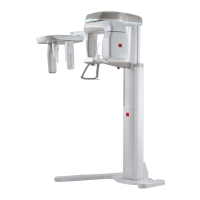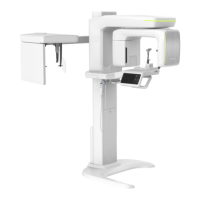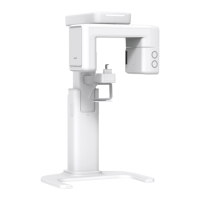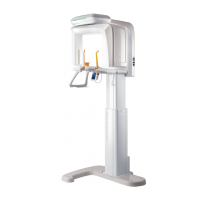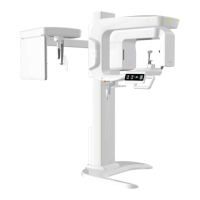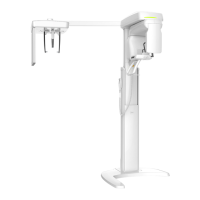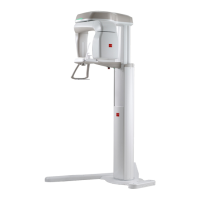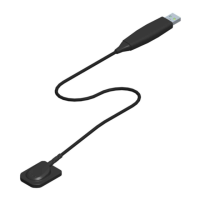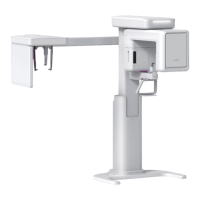
Do you have a question about the Vatech A9 and is the answer not in the manual?
| Brand | Vatech |
|---|---|
| Model | A9 |
| Category | Medical Equipment |
| Language | English |
Provides a general description of the 3-in-1 digital X-ray imaging system.
Details the intended uses of the system for panoramic, cone beam, and cephalometric imaging.
Lists the specific diagnostic purposes and applications of the system.
Outlines the required education, knowledge, and experience for operators.
Defines the conditions under which the manufacturer is responsible for product operation.
Details the responsibilities of owners and operators for equipment safety and maintenance.
Explains the symbols and conventions used throughout the user manual for clarity.
Illustrates and describes various marks and symbols found on the equipment and in the manual.
Covers operator qualifications and essential safety precautions for operating the equipment.
Outlines critical safety measures related to electrical connections and compatibility.
Provides essential guidelines and precautions for safe radiation handling and usage.
Lists important warnings regarding X-ray hazards, medical device interference, and legal restrictions.
Lists the main hardware and software components that make up the imaging system.
Highlights the key features and capabilities of the imaging system.
Details the available configurations and sensor options for the imaging system.
Lists the international standards and regulations the system complies with.
Explains the fundamental principles of how the X-ray imaging system operates.
Shows the system's configuration, including signal input/output connections.
Provides a detailed breakdown of the physical components of the equipment.
Specifies the recommended hardware and software requirements for the PC system.
Describes EzDent-i, the imaging software for patient management and diagnosis.
Explains the function of the Console Software for configuring imaging parameters.
Provides step-by-step instructions on how to power on the imaging equipment.
Guides users on launching and using the EzDent-i image viewer.
Explains how to start and configure the Console Software for imaging.
Introduces the PANO imaging program and its result images and acquisition method.
Details how to set up exposure parameters for acquiring PANO images.
Provides instructions and precautions for correctly positioning patients for PANO imaging.
Explains the procedure for performing the X-ray exposure for PANO imaging.
Outlines the steps for completing the PANO scan process.
Guides users on how to review and confirm the acquired PANO images.
Introduces the CEPH imaging program, its results, and acquisition method.
Details how to set up exposure parameters for CEPH imaging.
Provides guidance on correct patient positioning for various CEPH modes.
Explains the procedure for performing the X-ray exposure for CEPH imaging.
Outlines the steps for completing the CEPH scan process.
Guides users on how to review and confirm the acquired CEPH images.
Introduces the CBCT imaging program, its results, and acquisition method.
Details how to set up exposure parameters for CBCT imaging.
Explains the optional parameters for third molar CBCT scans.
Provides guidance on correct patient positioning for CBCT imaging.
Explains the procedure for performing the X-ray exposure for CBCT imaging.
Outlines the steps for completing the CBCT scan process.
Guides users on how to review and confirm the acquired CBCT images.
Compares image quality based on different patient postures and their impact.
Offers solutions for common operational problems and equipment malfunctions.
Explains the format and meaning of error codes displayed by the system.
Provides detailed instructions for cleaning various parts of the equipment.
Outlines the procedures and guidelines for disinfecting the equipment.
Covers routine maintenance tasks and general precautions for keeping the equipment operational.
Presents a checklist of daily, weekly, and monthly maintenance tasks.
Introduces the QA test procedures for image quality inspection and calibration.
Details the steps for performing Quality Assurance tests on the imaging system.
Provides detailed mechanical dimensions and specifications of the equipment.
Lists technical details for the X-ray generator and detectors.
Outlines the electrical requirements, power supply, and accuracy specifications.
Specifies the operating and storage conditions for temperature, humidity, and pressure.
Provides tables with recommended exposure settings for different modes and patient demographics.
Presents data related to X-ray dose, including DAP and leakage dose measurements.
Details the EMC test results and compliance information for the equipment.
Offers specific guidance for imaging pediatric patients, including age classification and positioning.
Illustrates how forward head posture affects image quality and potential artifacts.
Lists and defines common abbreviations used in the manual.

